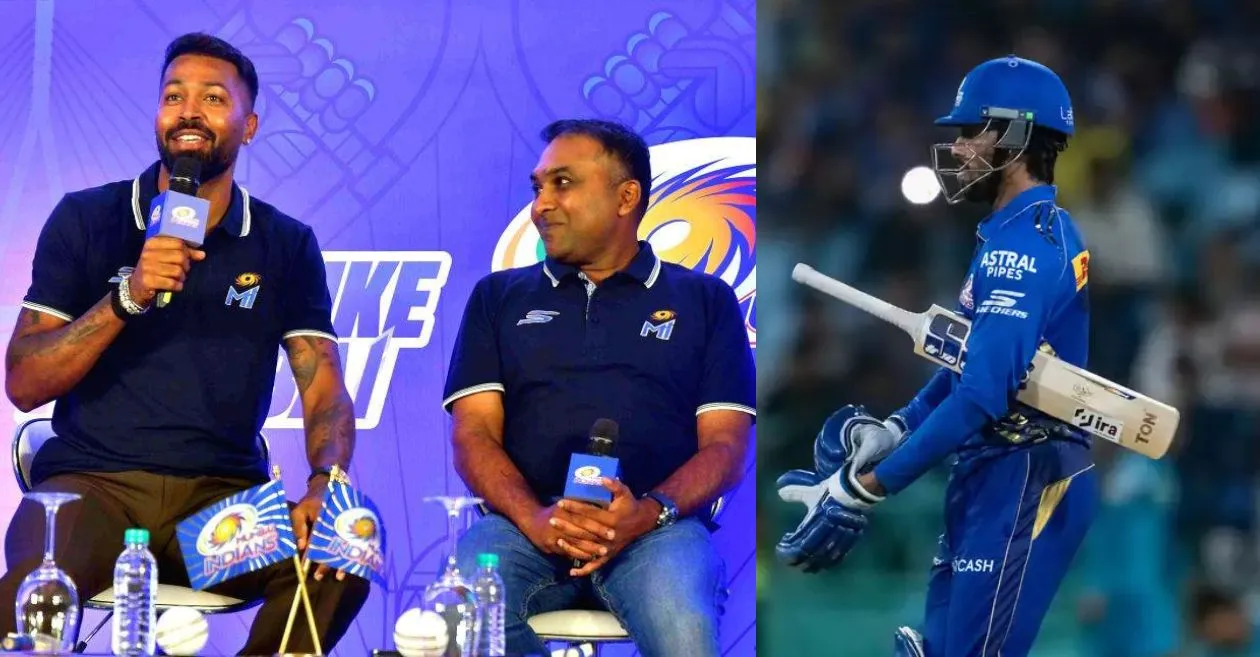The Indian Premier League (IPL) has long been a stage for cricketing innovation, on-field heroics, and dramatic moments that capture the imagination of millions. From last-ball thrillers to unexpected upsets, the tournament thrives on the unpredictable. But amidst all the chaos, few moments in its storied history have left fans as baffled and intrigued as Mumbai Indians’ (MI) decision to retire out Tilak Varma during a crucial match against Lucknow Super Giants (LSG) in IPL 2025.
The decision, which came during the penultimate over of MI’s tense 204-run chase, wasn’t just bold—it was controversial, unexpected, and a rare occurrence in top-tier cricket. As social media exploded and cricketing experts scrambled to dissect the logic, MI captain Hardik Pandya and head coach Mahela Jayawardene were left defending what they claimed was a “tactical move.”
But was it a masterstroke that backfired, or a misjudged gamble that cost MI a match?
The Moment That Stunned the Cricketing World
At first glance, Tilak Varma’s innings was anything but dramatic. He came in as MI’s Impact Player when the team was in a reasonably strong position—86 for 3 in 8.1 overs—chasing a massive total of 204 at the Ekana Stadium in Lucknow. Partnering with the in-form Suryakumar Yadav, Tilak looked to settle in and rebuild.
Together, the duo stitched a 66-run partnership off 48 deliveries. However, the contrast in their approach was glaring—while Suryakumar dazzled with 46 off 30 balls, Tilak found it hard to get going. His timing was off, boundaries were rare, and even strike rotation proved challenging.
After Suryakumar was dismissed, MI needed 52 off 23 balls. With every dot ball Tilak played, the pressure mounted. Eventually, with just seven balls left and MI still needing quick runs, the unthinkable happened—Tilak was retired out, walking off the field voluntarily without being dismissed.
The Numbers Game: Was the Decision Justified?
Tilak ended his innings with 25 off 23 balls—a strike rate of 108.70, unimpressive by T20 standards, particularly during a high-stakes chase. More crucially, in the partnership with Suryakumar, Tilak had contributed just 17 off 18 balls, while SKY kept the scoreboard moving.
The final over situation demanded power hitters who could clear the ropes. MI needed around 19 off the last 7 balls when Tilak walked off, and in his place came a fresh batter—someone the team management believed could muscle boundaries on demand.
But the gamble didn’t pay off.
Mumbai Indians fell short by 12 runs.
Mahela Jayawardene Breaks the Silence
In the aftermath, MI head coach Mahela Jayawardene faced a barrage of questions at the post-match press conference. A former tactician known for calculated risks, Jayawardene defended the move as purely strategic.
“He [Tilak] just wanted to get going but he couldn’t. I waited till the last few overs hoping that he would find his rhythm because he had spent some time there. But I just felt that at the end, I needed someone fresh to go, and he was struggling. These things happen in cricket. Not nice to take him out, but I had to do that—it was a tactical decision at that point,” he explained.
Jayawardene’s words were laced with empathy, but the underlying tone was firm—Tilak’s struggle was hurting the team, and drastic situations call for drastic measures.
Captain Hardik Pandya: “The Decision Speaks for Itself”
Captain Hardik Pandya, often known for his aggressive approach and bold decisions, backed his coach’s judgment. Speaking after the match, he didn’t shy away from acknowledging Tilak’s off-day.
“We needed some hits, and he was not able to get them. Sometimes in cricket, one of those days comes when you really want to try but it does not happen. The decision speaks for itself why we did it,” Pandya stated.
While Hardik’s tone remained diplomatic, it was clear the team believed this was the best shot they had—bringing in a clean striker over a struggling one, regardless of optics.
A Rare Phenomenon: Retired Out in the IPL
To understand the gravity of MI’s decision, it’s important to recognize just how rare a ‘retired out’ call is in cricket, let alone in the IPL. Tilak Varma became only the fourth player in IPL history to be retired out.
In most instances, a batter walking off voluntarily without being dismissed is seen either as a sign of injury or a strategic move in extreme circumstances. But such occurrences are often met with skepticism—after all, cricket is as much about loyalty to your players as it is about winning games.
The previous instances of ‘retired out’ in IPL also stirred controversy, but Tilak’s case has perhaps generated the most chatter—owing to the timing, the match context, and the stature of the Mumbai Indians as a franchise.
Social Media Reacts: Mixed Reactions Pour In
As soon as the clip of Tilak walking off was aired, Twitter, Instagram, and cricket forums lit up.
Some fans lauded the MI think tank for making a bold, data-driven decision aimed at maximizing their chances in a high-pressure scenario. Others criticized the call as panic-driven, disrespectful to a player trying his best under pressure.
“You can’t retire out a player who has just spent 20 balls in the middle. Trust matters,” read one popular tweet.
“MI did the right thing. Tilak was stuck, and in T20s, you don’t get time to warm up. You have to think fast,” another user argued.
What Does This Mean for Tilak Varma?
Perhaps the biggest question in the aftermath is about the player at the center of it all—Tilak Varma. A talented left-handed batter, Tilak has been one of MI’s most promising young stars in recent seasons. Being asked to walk off in such a manner could dent the confidence of any player.
However, team sources suggest Tilak took the decision “on the chin,” understanding the larger context. A source close to the team said, “He was disappointed, but he’s a team player. He knows these decisions are never personal.”
The coming matches will be crucial in determining how this episode impacts his mindset and form. Will it serve as motivation or act as a confidence hurdle?
A Glimpse into the Future of T20 Tactics?
Interestingly, this move also opens up a broader conversation about how T20 cricket is evolving. More and more teams are adopting data analytics, matchups, and aggressive tactics once seen as taboo.
Retiring out a player might still be rare, but it could become a strategic option in key moments, especially in leagues like the IPL, where margins are fine and playoff races are tight.
As franchises hire performance analysts, mental conditioning coaches, and decision science experts, the old-school emotion-driven decisions are making way for robotic efficiency. For purists, it may seem harsh—but for modern-day cricketing minds, it’s just another way to win.
The Verdict: Bold Innovation or Tactical Blunder?
In the final analysis, MI’s decision to retire out Tilak Varma will remain a hot topic for weeks to come. Whether it was a clever call that simply didn’t work out, or a misstep under pressure, is still up for debate.
What’s undeniable is that IPL 2025 just got more fascinating.
In a tournament known for its razzmatazz and high-voltage action, MI’s bold move has reminded everyone that T20 cricket is still evolving, still unpredictable, and still capable of sparking new conversations.
If nothing else, it’s yet another reminder that in the IPL, anything can happen—and often does.
What’s Next for MI? As Mumbai Indians prepare for their upcoming fixtures, the pressure is mounting. With a squad full of talent but facing inconsistency, they’ll be hoping that this decision—even if controversial—signals a willingness to experiment and adapt.
For Tilak Varma, the challenge is to bounce back stronger and remind everyone of the talent that earned him his spot in the first place.
And for fans? Well, it’s just another reason to keep watching.
Because in the IPL, no lead is safe, no game is over, and no move is off the table.
Please check for information on the best betting sites in India – https://selectory.org/best-betting-sites/















